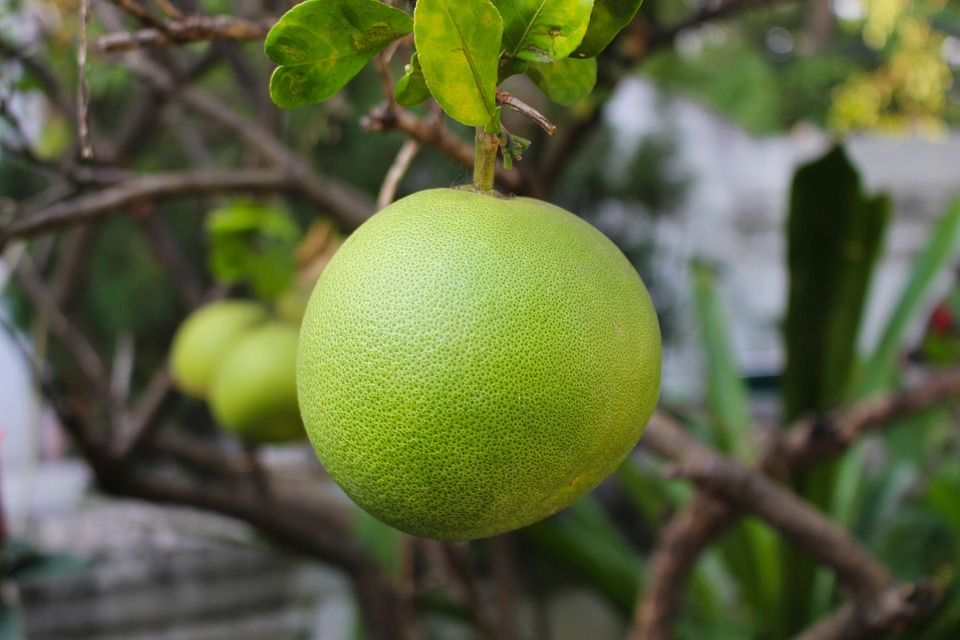The pomelo is a natural citrus fruit that looks very similar to a large grapefruit. The fruit is one of the original citrus species from which the rest of cultivated citrus hybridized from. Take a look below for 24 more interesting and fascinating facts about pomelo.
1. Pomelo was first called “shaddock” in English after Captain Shaddock of an East India Company ship introduced it to Barbados.
2. Historically, pomelo has been used to describe grapefruit and only recently has it come to describe the shaddock fruit.
3. One of the origin theories of the word “pomelo” is an alteration of a compound of English names “pomme” meaning apple and melon.
4. Pomelo is native to South-East Asia, where it’s known under a wide variety of different names.
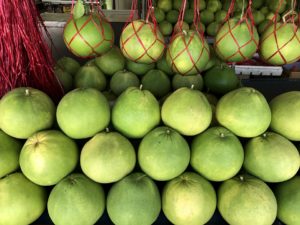
5. In large parts of South-East Asia, it’s a popular dessert, often eaten raw and sprinkled with, or dipped in, a salt mixture.
6. Pomelo trees can grow from 15 to 50 feet in height.
7. Pomelo trees develop large evergreen leaves. The leaves are oblong or elliptic-shaped and have winged petioles.
8. Pomelo produces flowers up to 4 times per year. The flowers are individual, large and usually purple colored. Some types of pomelo have white flowers.
9. Pomelo is best known by its pear-shaped or round fruit. The unripe fruit is always green colored, with the color changing to yellow as it ripens.
10. The fruit is large, usually 5.9 to 9.8 inches wide and weighing about 2.2 to 4.4 pounds. Some large specimens of pomelo can reach 12 inches in diameter and weigh up to 22 pounds.
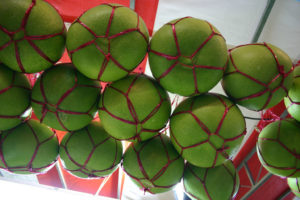
11. Pomelo has thick rind with dense, spongy pith beneath. The rind can easily be peeled. People usually discard the peel because it has a bitter taste.
12. The inner part of the pomelo consists of 11 to 18 segments. The pulp is usually sweet and juicy. Some varieties of pomelo have sour and dry flesh, though the color of the flesh will depend entirely on the type of pomelo.
13. Pomelo contains a few irregularly shaped ridged seeds.
14. The grapefruit is a hybrid produced by crossbreeding pomelo and an orange, while a tangelo is a hybrid produced by crossbreeding a pomelo and a tangerine.
15. Pomelo is an excellent source of vitamin C and vitamin A, dietary fibers and minerals such as potassium, iron and calcium.
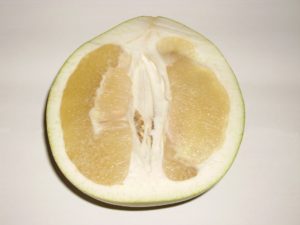
16. One quarter of pomelo provides 130% of daily requirements of vitamin C.
17. Pomelo is a low-caloric fruit. One quarter of pomelo contains only 60 calories.
18. Pomelo is usually eaten raw or in the form of fruit salads, juices, and alcoholic and non-alcoholic beverages. It’s also used as an ingredient of various sweet and salty dishes, especially in Asian cuisine.
19. Pomelo peels can be candied, used for the production of marmalades or consumed in combination with chocolate. It’s also used as seasoning for meat dishes.
20. Pomelo is sometimes used in treatment of gastrointestinal disorders, cough, sore throat, fever, fatigue and insomnia.
21. Pomelo flowers are used in the perfume industry for creating new scents.
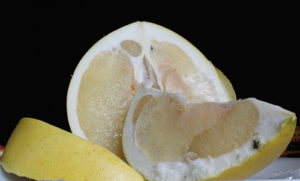
22. Pomelo tree wood is used for manufacturing various tool handles.
23. In China, pomelo tree leaves and fruit rind are boiled and used for ritual cleansing of the body and for protection against evil spirits.
24. The pomelo tree can usually live for around 10 years in the wild.

